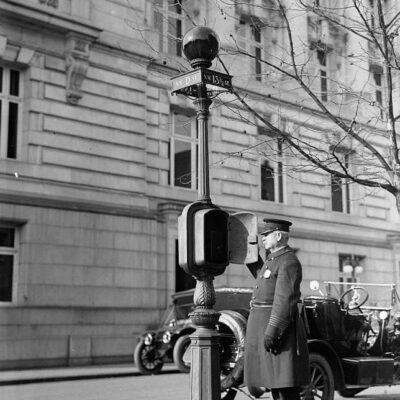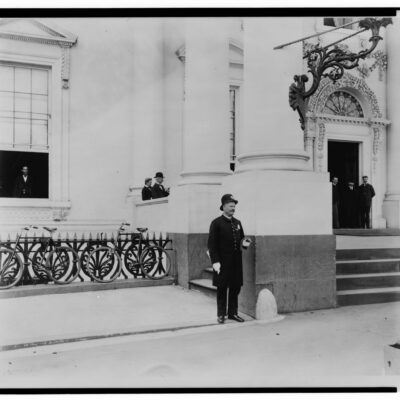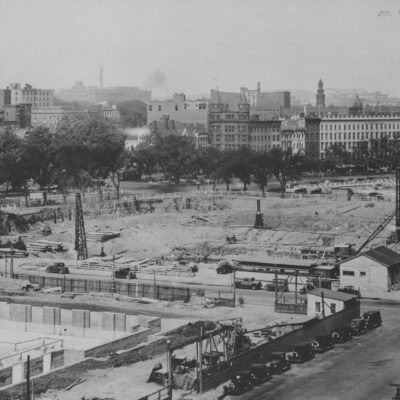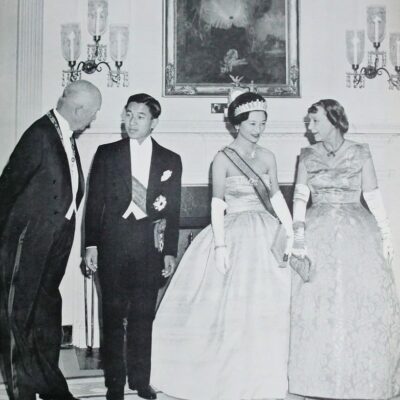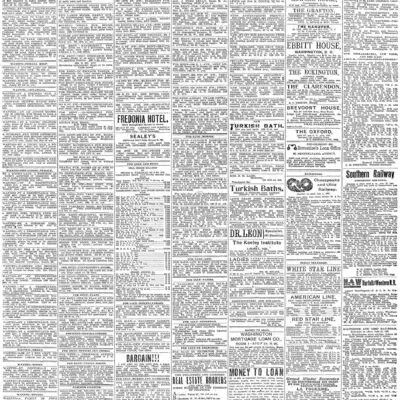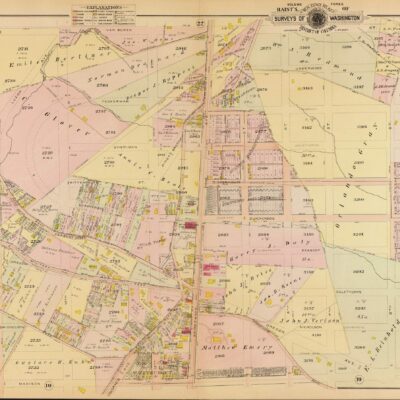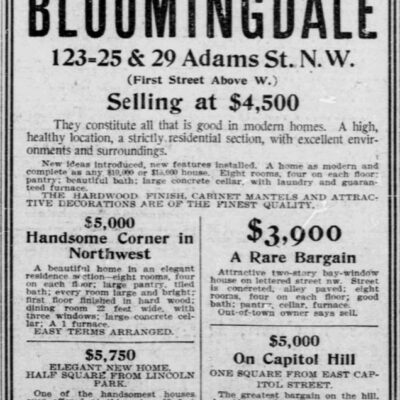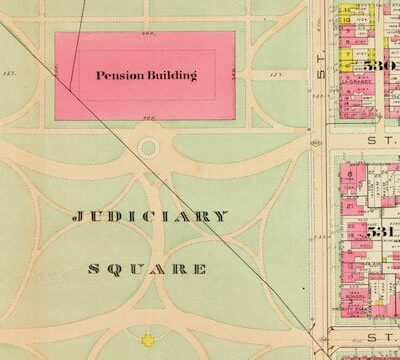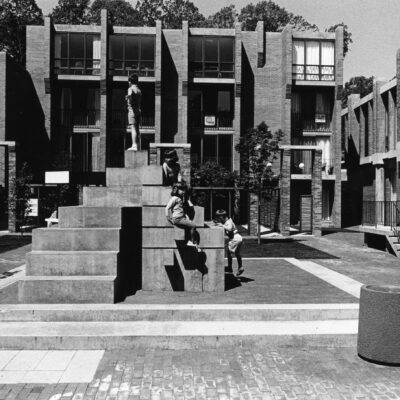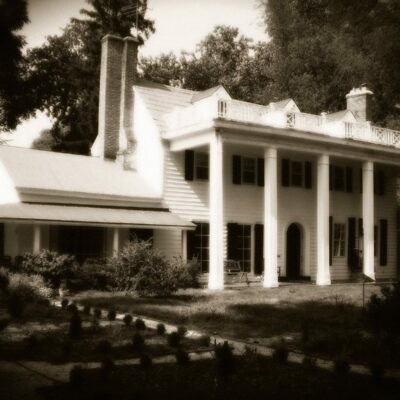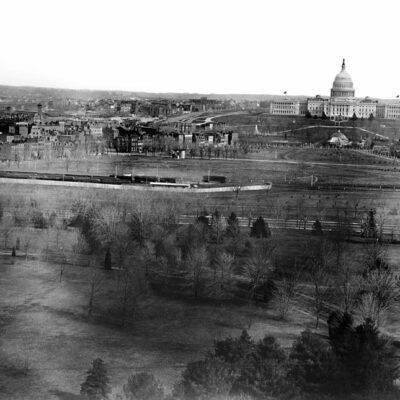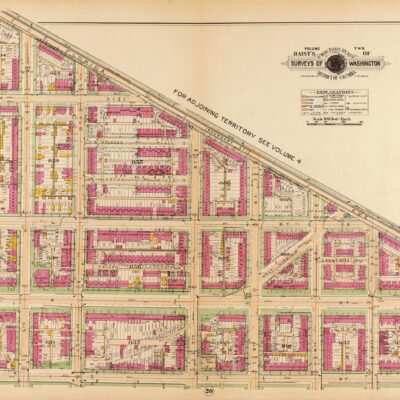The debate over building height is certainly not a new one for Washington. It seems to be constant conversation, and we thought it would be interesting to dig up previous arguments from the archives of The Washington Post.
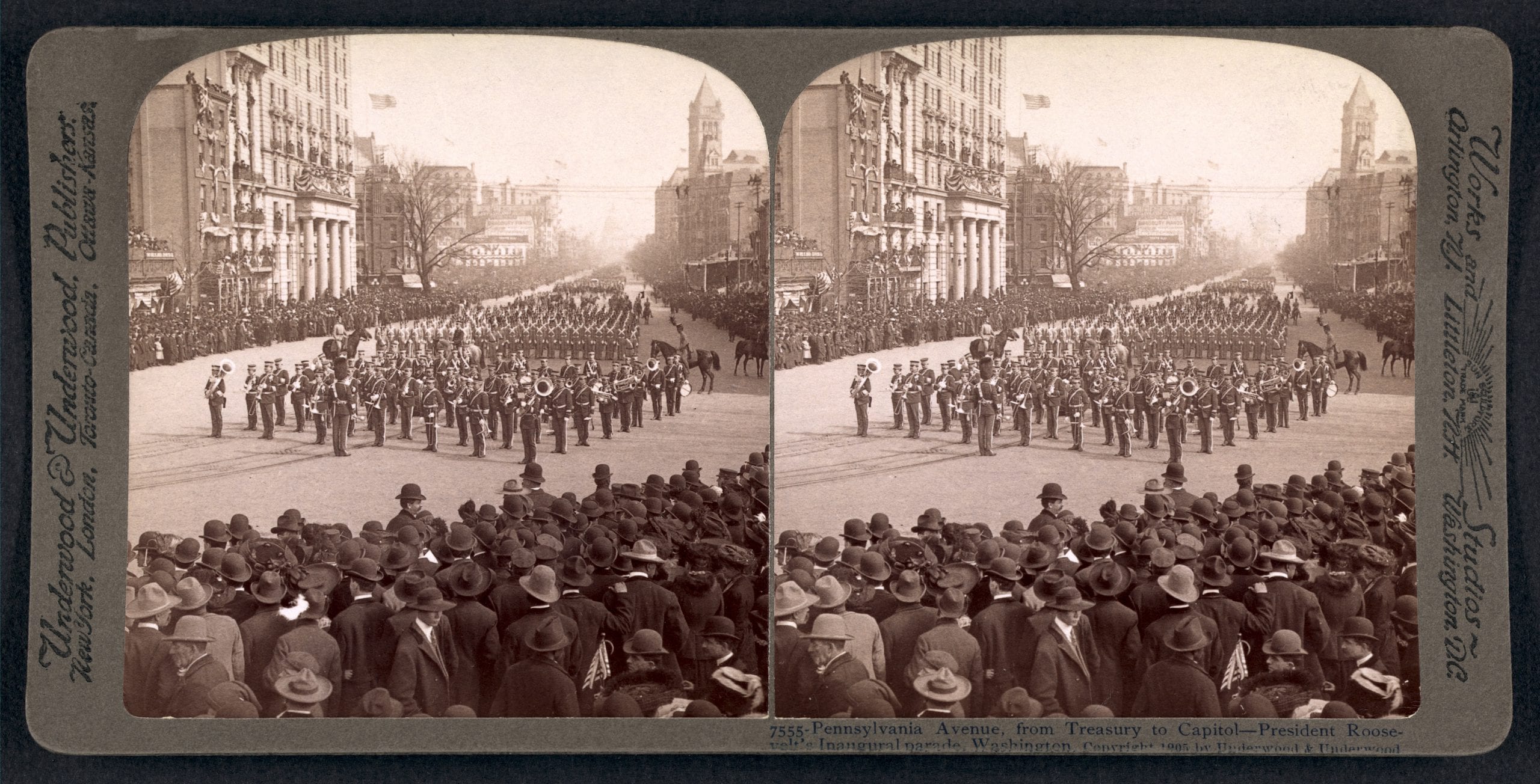
Source: Library of Congress
Here is one letter to the editor, printed on April 24th, 1905.
Editor Post: A practical question frequently brought before the people, as well as the Commissioners, of this District concerns the limiting of the height of buildings. Those who discuss the question almost invariably discredit its seriousness by the suggestion, or statement, that it has to do merely with esthetics. It is a question having to do just as much, and perhaps more, with ethics.
For instance, it is the opinion of most students of sanitary conditions that the average lifetime, at least the effective lifetime, of all those obliged to do business in or near the skyscapper [sic] of New York will, on account of this , be lessened by from ten to fifteen years. This form of building deprives men of sunlight, fresh air, and unimpeded sewage. It empties such crowds upon the streets that one cannot elbow his way through them without distinct consciousness of nervous strain, nor, at the end of a wearisome day, find a street car in which he must not breathe foul air. Before many years some of these buildings will smoke or burn to death hundreds of people. Some will be used for tenement houses, not sufficiently lucrative to justify running elevators, and the misery that will ensue will be incalculable.
…
Washington can become a model city, the buildings which are now here can preserve their impressiveness, the buildings which are to be constructed can be kept from doing their share toward inflicting that cure upon our civilization, which, in a few years, everybody will acknowledge that the skyscraper has inflicted in the degree only in which we have citizens with public spirit enough, and Commissioners with backbone enough, to refrain from doing–for mere money consideration–that which, in their hearts, they know to be contrary to the best interests of the city, the country, and the people as a whole.
I agree in part with much that has been said of the esthetic value of the skyscraper. It will always be remembered in the history of art. It will be acknowledged to have been a notable triumph of engineering skill. It will be acknowledged, too, to have been worthy of artistic study, because it has furnished an accurate representation of the character of the millionaire who erected it. But the character of this millionaire–and partly because of his skyscraper–will also be universally recognized to have been one of the most inconsiderate, unscrupulous, and self-seeking, as well as ostentatious, of which history contains any record. If possible, let us make the buildings of Washington representative of traits more worthy of the Capital of a nation whose institutions were intended to be for the people and of the people.
GEORGE LANSING RAYMOND.
There are still plenty of people like George, making the argument that Washington should not remove the height restriction. And, if you’re curious, Mr. Raymond lived at 1810 N St. NW in 1905. He was a graduate of Williams in 1862 as well as Princeton in 1865. While living in Washington, he was a professor of Esthetics at George Washington University between 1905 and 1912. Originally from Chicago, George died on July 11th, 1929.


